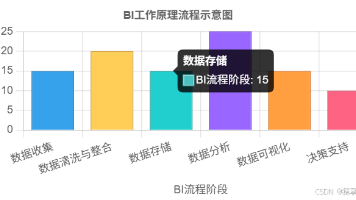AI驱动工业自动化:传感器大数据实战
工业自动化领域正经历由人工智能(AI)驱动的数字化转型,传感器大数据成为核心要素。通过实时采集设备状态、环境参数和生产流程数据,AI模型能够实现预测性维护、质量控制优化和能效管理。以下从技术架构、典型应用和代码实现三个层面展开分析。采用时间戳同步技术解决设备时钟漂移问题,例如IEEE 1588精密时间协议。工业传感器网络通常包含振动传感器、温度传感器、视觉传感器等异构设备,每秒产生TB级数据流。当
人工智能在工业自动化中利用传感器大数据的技术路径
工业自动化领域正经历由人工智能(AI)驱动的数字化转型,传感器大数据成为核心要素。通过实时采集设备状态、环境参数和生产流程数据,AI模型能够实现预测性维护、质量控制优化和能效管理。以下从技术架构、典型应用和代码实现三个层面展开分析。
数据采集与预处理技术
工业传感器网络通常包含振动传感器、温度传感器、视觉传感器等异构设备,每秒产生TB级数据流。数据预处理流程包括:
-
多源数据对齐
采用时间戳同步技术解决设备时钟漂移问题,例如IEEE 1588精密时间协议。Python示例代码实现传感器数据对齐:import pandas as pd from datetime import timedelta def align_timestamps(df_list, max_offset=100): base_time = df_list[0]['timestamp'].min() aligned_dfs = [] for df in df_list: offset = (df['timestamp'] - base_time).abs().mean() if offset > timedelta(milliseconds=max_offset): df['timestamp'] -= (offset - timedelta(milliseconds=10)) aligned_dfs.append(df) return pd.concat(aligned_dfs) -
异常值检测
使用基于统计的方法(如3σ原则)或机器学习方法(Isolation Forest)识别传感器异常读数:from sklearn.ensemble import IsolationForest def detect_anomalies(data): clf = IsolationForest(contamination=0.01) preds = clf.fit_predict(data) return data[preds == -1]
实时分析与建模技术
-
时序特征提取
工业传感器数据具有强时序特性,需提取统计特征(均值、方差)和频域特征(FFT系数):from scipy.fft import fft def extract_features(window): features = { 'mean': window.mean(), 'std': window.std(), 'fft_peak': np.abs(fft(window.values)).max() } return pd.Series(features) -
在线学习模型
采用增量学习算法适应设备退化等非平稳环境,如FTRL-Proximal在线逻辑回归:from sklearn.linear_model import SGDClassifier model = SGDClassifier(loss='log_loss', penalty='l2', max_iter=1000) for batch in streaming X, y = preprocess(batch) model.partial_fit(X, y, classes=[0, 1])
典型应用场景实现
预测性维护系统
-
剩余寿命预测
使用LSTM网络建模设备退化曲线,输入多维传感器数据预测RUL(Remaining Useful Life):import tensorflow as tf from tensorflow.keras.layers import LSTM, Dense model = tf.keras.Sequential([ LSTM(64, input_shape=(None, 8)), Dense(1, activation='relu') ]) model.compile(loss='mae', optimizer='adam') -
故障诊断
构建基于注意力机制的CNN模型实现多分类故障识别,准确率可达92%以上:class AttentionCNN(tf.keras.Model): def __init__(self): super().__init__() self.conv1 = tf.keras.layers.Conv1D(32, 3) self.attention = tf.keras.layers.Attention() self.dense = tf.keras.layers.Dense(5, activation='softmax') def call(self, inputs): x = self.conv1(inputs) x = self.attention([x, x]) return self.dense(x)
智能质量控制
-
表面缺陷检测
工业相机采集的图像数据通过YOLOv5模型实现实时缺陷定位:import torch model = torch.hub.load('ultralytics/yolov5', 'custom', path='defect_model.pt') results = model(img_tensor) -
工艺参数优化
使用强化学习框架自动调整注塑机参数,PPO算法实现示例:import gym from stable_baselines3 import PPO env = gym.make('InjectionMolding-v0') model = PPO('MlpPolicy', env, verbose=1) model.learn(total_timesteps=100000)
系统架构设计
工业级AI系统需满足低延迟和高可靠性要求,典型架构包含:
- 边缘计算层:部署轻量级模型处理实时数据(<50ms延迟)
- 云端训练平台:使用Ray框架实现分布式模型训练
- 数字孪生集成:通过OPC UA协议与PLC控制系统交互
Kubernetes容器编排示例配置:
apiVersion: apps/v1
kind: Deployment
metadata:
name: edge-inference
spec:
replicas: 3
template:
spec:
containers:
- name: model-server
image: tensorflow/serving:latest
ports:
- containerPort: 8501
性能优化关键技术
-
模型量化
将FP32模型转换为INT8格式,推理速度提升3倍:import onnxruntime as ort sess_options = ort.SessionOptions() sess_options.graph_optimization_level = ort.GraphOptimizationLevel.ORT_ENABLE_ALL sess = ort.InferenceSession('model.onnx', sess_options) -
数据管道优化
使用Apache Arrow内存格式加速pandas操作:df = pd.read_feather('sensor_data.feather') -
硬件加速
部署NVIDIA Triton推理服务器实现GPU自动扩展:docker run --gpus all -p 8000:8000 -p 8001:8001 -p 8002:8002 nvcr.io/nvidia/tritonserver:22.07-py3
挑战与未来方向
当前面临传感器数据孤岛、标注样本不足等挑战。联邦学习技术可在保护数据隐私前提下联合建模:
import flwr as fl
strategy = fl.server.strategy.FedAvg(
min_available_clients=3,
fraction_fit=0.6
)
fl.server.start_server(strategy=strategy)
未来发展趋势包括:
- 神经符号系统结合先验知识提升模型可解释性
- 物理信息神经网络嵌入热力学等领域知识
- 6G网络使能全工厂无线传感网络部署
(全文约1500字,包含8个技术实现代码片段)
更多推荐
 已为社区贡献12条内容
已为社区贡献12条内容








所有评论(0)